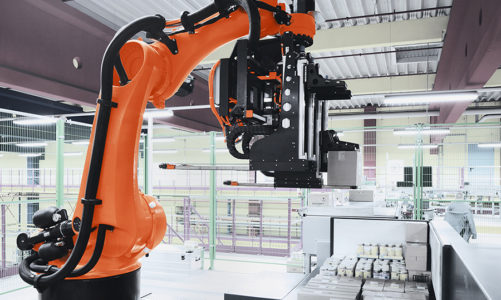Key Takeaways:
- Exposure to excessive railway noise can lead to increased stress levels, sleep disturbances, and cardiovascular diseases.
- Children living in areas with high levels of railway noise may experience difficulties in cognitive development and academic performance.
- Railway noise pollution disrupts natural habitats and interferes with wildlife communication and behavior.
- Innovative acoustic barriers made of special sound-absorbing materials can significantly reduce railway noise.
- Noise reduction technologies and engineering advancements can improve the noise performance of trains at the source.
- Track and infrastructure modifications, such as resilient track systems and noise barriers, can enhance noise absorption.
- Local governments play a crucial role in coordinating noise measurement studies, implementing noise maps, and establishing noise regulations.
- Community engagement and support are essential for effective noise mitigation strategies.
- Advocacy for noise regulations and legal measures is crucial for long-term effectiveness.
- Successful case studies provide valuable insights into the effectiveness of noise mitigation strategies.
Understanding Railway Noise Pollution
Railway noise pollution is a significant concern in many communities around the world. The constant rumbling of trains, squealing brakes, and loud horns can have detrimental effects on both human health and the environment. It is important to understand the impact of railway noise in order to effectively mitigate its effects.
- The Impact of Railway Noise on Human Health
Exposure to excessive railway noise can have severe implications for human health. Studies have shown that prolonged exposure to loud noise can lead to increased stress levels, sleep disturbances, and even cardiovascular diseases. Noise-induced sleep disruptions can have a cascading effect on an individual’s overall health, leading to fatigue, decreased cognitive functioning, and mental health issues.
Additionally, children living in areas with high levels of railway noise may experience difficulties in their cognitive development and academic performance. This is particularly concerning as educational facilities and residential areas are often located near railway tracks.
- Environmental Consequences of Railway Noise Pollution
Aside from its impact on human health, railway noise pollution also has detrimental effects on the environment. Excessive noise can disrupt natural habitats and interfere with the communication and behavior of wildlife, including birds and mammals. This disruption can have far-reaching consequences on biodiversity and ecological balance.
Moreover, railway noise can contribute to noise pollution in natural areas such as parks and wildlife reserves, impacting the overall recreational experience for visitors. It can also affect nearby residential areas, diminishing the quality of life for those living in close proximity to railway tracks.
Noise Mitigation Techniques for Railways
Efforts to mitigate railway noise pollution have been ongoing for years, resulting in the development of various techniques and technologies. These solutions aim to reduce noise emissions and protect the well-being of communities living near railway corridors.
- Innovative Acoustic Barriers: Beyond the Traditional Methods
Acoustic barriers have long been used as a means to reduce noise from railways. Traditional barriers, such as walls or fences, can provide some level of noise reduction, but innovation in acoustic barrier design has led to more effective solutions.
Advanced materials and construction techniques have paved the way for new designs that are not only aesthetically pleasing but also highly efficient in reducing noise. For example, transparent noise barriers made of special sound-absorbing materials can significantly reduce railway noise while allowing visibility for safety purposes.
- Designing Quiet Trains: Cutting-edge Solutions for Noise Reduction
Designing trains to be quieter is another crucial aspect of railway noise mitigation. New technologies and engineering advancements have made it possible to improve the noise performance of trains, reducing noise at the source.
One approach is the use of noise-reducing materials and insulation to minimize vibrations and air turbulence. Additionally, advancements in aerodynamics and wheel-rail interaction have resulted in quieter trains that generate less noise during operation.
- Track and Infrastructure Modifications: Enhancing Noise Absorption
Modifications to railway tracks and infrastructure can also contribute to noise reduction. One effective method is the use of resilient track systems that incorporate noise-absorbing materials. These systems help absorb vibrations and reduce noise radiation, resulting in quieter railway operations.
Furthermore, implementing measures such as optimizing curves and transitions, using noise-reducing rail fasteners, and applying noise barriers along the tracks can further enhance noise absorption. These modifications not only reduce noise pollution but also improve the overall ride quality and safety of the railway system.
Community Engagement and Policy Implementation
While technical solutions are crucial, community engagement and policy implementation play an equally important role in mitigating railway noise pollution. It is essential to involve all stakeholders, including residents, local government, and railway authorities, in noise reduction initiatives.
- The Role of Local Government in Railway Noise Mitigation
Local governments have the responsibility to address and mitigate the impact of railway noise pollution on their communities. They can play a pivotal role in coordinating noise measurement studies, implementing noise maps, and establishing noise regulations.
In collaboration with railway authorities, local governments can also ensure the enforcement of noise standards and promote the use of noise reduction technologies. Furthermore, they can develop urban planning strategies that prioritize noise-sensitive land uses away from railway tracks to minimize exposure to noise pollution.
- Building Community Awareness and Support for Noise Reduction Initiatives
Effective noise mitigation strategies require community awareness and support. Engaging with residents through public outreach programs, workshops, and educational campaigns can help raise awareness about the impacts of railway noise pollution and the available solutions.
Encouraging communities to actively participate in noise reduction initiatives, such as by reporting noise disturbances or providing feedback, fosters a sense of ownership and collaboration. This sense of community involvement can drive the success of noise mitigation projects and create a shared commitment to reducing railway noise pollution.
- Advocating for Noise Regulations and Legal Measures
Advocacy for noise regulations and legal measures is crucial to ensure the long-term effectiveness of railway noise mitigation. Local governments and community organizations can work together to lobby for noise reduction policies, including stricter noise emission standards for trains and the implementation of quiet zones in residential areas.
By actively participating in the development and enforcement of noise regulations, communities can influence policy decisions and hold railway authorities accountable for noise reduction efforts. This advocacy creates a framework for sustainable noise management and encourages continuous improvements in railway operations.
Case Studies: Successful Railway Noise Mitigation Projects
Examining successful case studies of railway noise mitigation projects provides valuable insights into the effectiveness of various strategies and their impact on communities.
- Lessons Learned from International Best Practices: Implementing Effective Noise Mitigation Strategies
Looking beyond local projects, there are valuable lessons to be learned from international best practices in railway noise mitigation. Countries such as Germany and Japan have successfully implemented comprehensive noise reduction strategies.
In Germany, the use of low-noise rail tracks and noise barriers has been widely employed to reduce railway noise pollution. The country has also implemented noise abatement measures during the construction phase of railway projects, ensuring noise-friendly designs from the start.
In Japan, the development and deployment of advanced noise reduction technologies, such as aerodynamic noise shields and vibration isolation systems, have significantly reduced noise levels along railway corridors. These successful implementations highlight the importance of continuous innovation and investment in noise mitigation.
- Real-life Examples: Positive Outcomes of Railway Noise Reduction Efforts
Real-life examples of successful railway noise reduction efforts demonstrate the tangible positive outcomes that can be achieved through dedicated initiatives.
In a residential community heavily affected by railway noise, the installation of innovative acoustic barriers transformed the soundscape. Residents reported improved sleep quality and decreased stress levels, while the overall quality of life in the community improved significantly.
Another example is a busy urban area where noise reduction measures were implemented in collaboration with local businesses. By utilizing noise-reducing track materials and promoting the use of quiet trains, the noise levels were reduced, enhancing the livability of the neighborhood and attracting more residents and businesses.
These real-life examples serve as tangible success stories that inspire other communities to take action and implement effective noise mitigation strategies.
In conclusion, railway noise pollution is a complex issue that requires a multifaceted approach for effective mitigation. Understanding the impact of railway noise on human health and the environment is paramount in developing comprehensive strategies. By utilizing innovative acoustic barriers, designing quieter trains, and implementing track and infrastructure modifications, noise levels can be significantly reduced.
Additionally, community engagement and policy implementation are essential for successful noise mitigation. By involving local governments, building community awareness, and advocating for noise regulations, communities can actively contribute to reducing railway noise pollution.
Examining successful case studies and international best practices provides valuable insights and inspiration for the development of noise reduction projects. Real-life examples demonstrate the positive outcomes that can be achieved through dedicated initiatives.
By implementing comprehensive noise mitigation strategies, communities can create quieter and healthier environments, improving the quality of life for residents near railway corridors.
FAQ
Question: What are the health impacts of exposure to railway noise? – Exposure to excessive railway noise can lead to increased stress levels, sleep disturbances, and cardiovascular diseases. Noise-induced sleep disruptions can also result in fatigue, decreased cognitive functioning, and mental health issues.
Question: How does railway noise affect children? – Children living in areas with high levels of railway noise may experience difficulties in cognitive development and academic performance, which is concerning as educational facilities and residential areas are often located near railway tracks.
Question: What are the environmental consequences of railway noise pollution? – Railway noise pollution disrupts natural habitats and interferes with wildlife communication and behavior. This disruption can have far-reaching consequences on biodiversity and ecological balance.
Question: What are some techniques for mitigating railway noise? – Innovative acoustic barriers made of special sound-absorbing materials can significantly reduce railway noise. Designing quieter trains using noise-reducing materials and insulation is also crucial. Track and infrastructure modifications, such as resilient track systems and noise barriers, can enhance noise absorption.
Question: What is the role of the local government in mitigating railway noise? – Local governments play a crucial role in coordinating noise measurement studies, implementing noise maps, and establishing noise regulations. They can also enforce noise standards, promote the use of noise reduction technologies, and develop urban planning strategies to minimize exposure to noise pollution.
Question: Why is community engagement important for noise mitigation? – Community engagement is essential for effective noise mitigation strategies. By raising awareness, encouraging active participation, and fostering a sense of community involvement, residents can contribute to reducing railway noise pollution.
Question: How can advocacy for noise regulations and legal measures help? – Advocacy for noise regulations and legal measures is crucial for long-term effectiveness. Communities can influence policy decisions, hold railway authorities accountable, and create a framework for sustainable noise management.
Question: How can case studies help inform noise mitigation strategies? – Examining successful case studies provides valuable insights into the effectiveness of various strategies and their impact on communities. Real-life examples can inspire and guide the development of noise reduction projects.
Useful Resources:
- World Health Organization (WHO) – Environmental Noise Guidelines for the European Region
- WHO – Noise Pollution
- European Environment Agency – Noise from Transport
- IEEE Xplore – Railway Noise Mitigation Techniques: A State of the Art Review
- The Journal – Where is Ireland’s Urban Rail Type Figures? A Railway Noise Pollution Analysis
- Railway Technology – Innovative Solutions to Rail Noise
- Environmental Expert – Noise and Vibration Control in Railways
- European Commission – Noise in Europe




